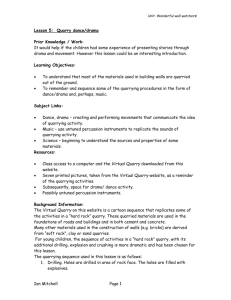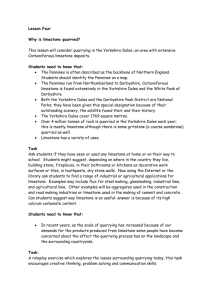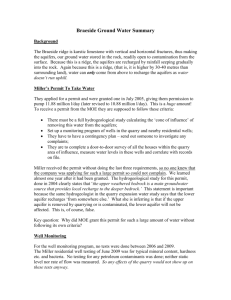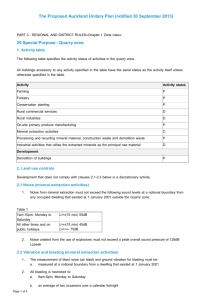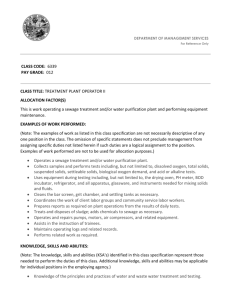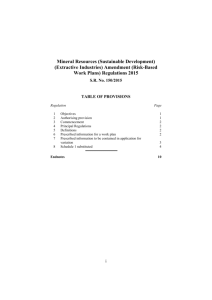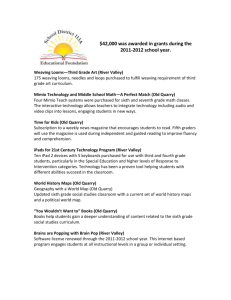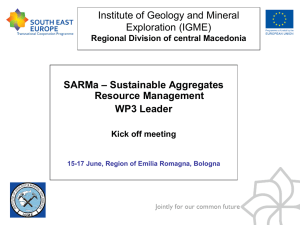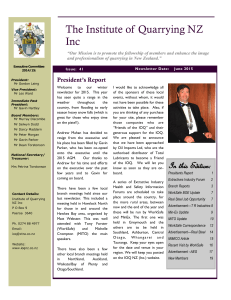130712-13QN025-Additional Informaton
advertisement
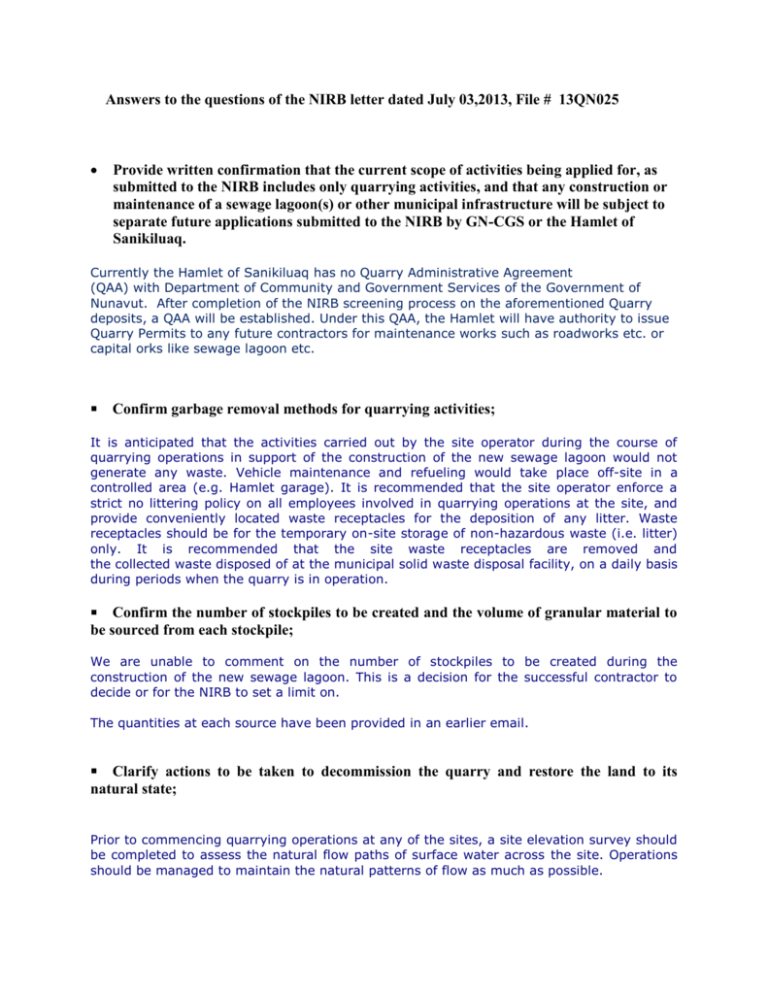
Answers to the questions of the NIRB letter dated July 03,2013, File # 13QN025 Provide written confirmation that the current scope of activities being applied for, as submitted to the NIRB includes only quarrying activities, and that any construction or maintenance of a sewage lagoon(s) or other municipal infrastructure will be subject to separate future applications submitted to the NIRB by GN-CGS or the Hamlet of Sanikiluaq. Currently the Hamlet of Sanikiluaq has no Quarry Administrative Agreement (QAA) with Department of Community and Government Services of the Government of Nunavut. After completion of the NIRB screening process on the aforementioned Quarry deposits, a QAA will be established. Under this QAA, the Hamlet will have authority to issue Quarry Permits to any future contractors for maintenance works such as roadworks etc. or capital orks like sewage lagoon etc. Confirm garbage removal methods for quarrying activities; It is anticipated that the activities carried out by the site operator during the course of quarrying operations in support of the construction of the new sewage lagoon would not generate any waste. Vehicle maintenance and refueling would take place off-site in a controlled area (e.g. Hamlet garage). It is recommended that the site operator enforce a strict no littering policy on all employees involved in quarrying operations at the site, and provide conveniently located waste receptacles for the deposition of any litter. Waste receptacles should be for the temporary on-site storage of non-hazardous waste (i.e. litter) only. It is recommended that the site waste receptacles are removed and the collected waste disposed of at the municipal solid waste disposal facility, on a daily basis during periods when the quarry is in operation. Confirm the number of stockpiles to be created and the volume of granular material to be sourced from each stockpile; We are unable to comment on the number of stockpiles to be created during the construction of the new sewage lagoon. This is a decision for the successful contractor to decide or for the NIRB to set a limit on. The quantities at each source have been provided in an earlier email. Clarify actions to be taken to decommission the quarry and restore the land to its natural state; Prior to commencing quarrying operations at any of the sites, a site elevation survey should be completed to assess the natural flow paths of surface water across the site. Operations should be managed to maintain the natural patterns of flow as much as possible. Once the decision has been made to close any of the quarry sites, it is recommended that a grading plan be designed based on a final elevation survey of the site. The grading plan should be designed to ensure that excessive surface water does not accumulate at any point within the site boundary and that the natural patterns of flow determined prior to the commencement of quarrying activities are restored. Silt fencing should be provided as needed to prevent the loading of silty material into adjacent water courses. Any stockpiles of material that remain at the cessation of quarrying activities will be managed as follows: (1) larger, boulder-sized material will be spread evenly across the site, and (2) intermediate cobble-sized material and smaller gravel-sized material will be used it assist in the final grading of the site and to re-establish more natural contours. A pre-closure site inspection should be performed to identify any areas that may have been impacted due to petroleum hydrocarbon spillage during the course of quarry operations. Any areas of hydrocarbon contamination should be delineated and an assessment made at that time as to the optimal method of managing the impacted soil. In addition to the above, and prior to completing the final site grading, all site waste (nonhazardous) will be collected and disposed of at the community solid waste disposal facility. Any hazardous wastes collected shall be properly contained and possibly shipped off-site to an appropriate disposal facility in Southern Canada. Provide dust management and waste management plans for quarrying activities; The site operator will be responsible for dust prevention and mitigation during the operation of the quarry in support of the construction of the new sewage lagoon. It is therefore recommended that the site operator develop a Dust Management management plan that includes, but is not necessarily limited to, the following: 1. Limit to vehicle speeds of 10-15 km/hr 2. Limit to load size to avoid spillage 3. Covering of loads with tarps 4. In cases of excessive dust generation, provision of truck and wheel spray-down facilities at the quarry site exit 5. Application of a light water spray to roads travelled by quarry trucks 6. Monitoring of dust complaints on a regular basis during operations (daily suggested) and response to dust complaints immediately via the five methods listed above (note: the site operator should set up a system of processing complaints that is simple to do and involves one chain of communication, such as issuing complaint forms to the Hamlet). Site Waste Management: As noted above, the site operator will be responsible for the management of waste generated at the quarry site during operations in support of the construction of the new sewage lagoon. Therefore, it is recommended that the site operator develop a site waste management plan that includes, but is not necessarily limited to, the following: 1. A list of wastes that have the potential to be generated on site, including their potential source of generation, the volume or mass that could be expected, and the potential environmental effects of their deposition at the site 2. Classification of wastes potentially generated (i.e. hazardous, non-hazardous, recyclable, organic etc.) 3. Proposed location for all waste storage receptacles 4. Location of local waste management facilities 5. A description of the proposed method of handling each type of waste (including the activities involved, the equipment required, and the rationale behind the choice of method) 6. A description of the waste storage to be provided on-site (including receptacle volumes, number, and schedule for disposal. Confirm if blasting activities will occur at the quarry site and identify relevant mitigation measures for such activities; and It is not believed that blasting activities will be required for the construction of the new sewage lagoon. Clarify what type of potential road maintenance may be required to support the transportation of granular materials from the quarry. Road maintenance in support of the transportation of granular materials for the construction of the new sewage lagoon will be limited to grading and application of surface finishing materials as required. Thanks. Bhabesh Bhabesh Roy, M.A.Sc., P.Eng. Municipal Planning Engineer Community Government Services Baffin Region, Government of Nunavut P.O.Box 379, Pond Inlet, X0A 0S0 Ph-867 899 7314 Fax-867 899 7328 E-mail: broy@gov.nu.ca
